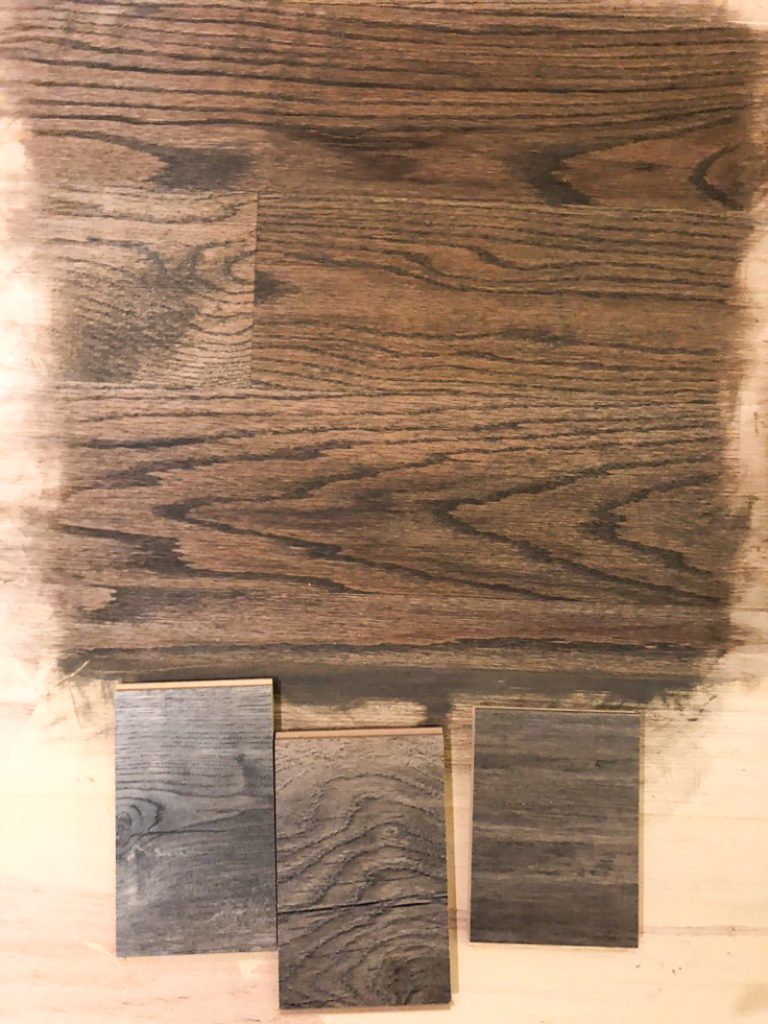
selecting the optimal wooden floor stain colors can feel overwhelming. With countless shades available, choosing the right one for your home can significantly impact its overall ambiance and style. This thorough guide will help you navigate the world of wood stains, providing practical tips and advice to ensure you make an informed decision. We’ll explore various factors influencing stain selection, from your home’s style and lighting to the type of wood you’re working with. By the end of this guide, you’ll be equipped with the knowledge and confidence to select the perfect stain color that beautifully complements your interior. We’ll cover everything from understanding varied undertones to considering the long-term effects of your choice. Let’s dive in and find the perfect wooden floor stain colors for your dream home!
Understanding Your Home’s Style and Existing Décor
Matching Stain Colors to Interior Design
Before diving into specific stain colors, it’s crucial to consider your home’s overall style and existing décor. Do you have a modern, minimalist aesthetic? Or perhaps a more traditional, rustic feel? The stain color you select should complement your home’s existing design elements. For instance, a light, natural stain might be perfect for a Scandinavian-inspired space, while a darker, richer stain could work well in a more traditional setting. Think about the color palette in your furniture, walls, and other décor. You want the floor to enhance these elements, not clash with them. A good rule of thumb is to select a stain color that either complements or contrasts subtly with your existing colors. This will create a cohesive and harmonious look throughout your home.
Considering the Amount of Natural Light
Natural light plays a significant function in how a stain color appears. Rooms with abundant natural light can handle darker stain colors, as the light will prevent the space from feeling too dim. Conversely, rooms with limited natural light may benefit from lighter stain colors to maintain brightness and openness. Experiment with samples in varied lighting conditions to see how the colors change throughout the day. You might be surprised by how much the lighting impacts the final look. In rooms with north-facing windows receiving less direct sunlight, a medium tone wood stain might be preferable, whereas south-facing rooms bathed in sun can often accommodate deeper, richer colors.
The Impact of Undertones in Wood Stains
Wood stains aren’t just about the overall color; undertones significantly affect the final appearance. Undertones are the subtle hints of other colors within the main shade. For instance, a brown stain might have red, green, or even gray undertones. Understanding these undertones is key to selecting a stain that harmonizes with your space. Red undertones can add warmth and vibrancy, while gray undertones create a more sophisticated, contemporary feel. Green undertones can offer a unique, earthy vibe, particularly suited to rustic or farmhouse styles. Pay close attention to these subtle nuances, as they can dramatically alter the overall impression of your flooring.
Exploring varied Stain Color Families
Light and Natural Wood Stain Colors
Light and natural stain colors, like honey, light oak, and blonde, create a bright, airy feel in a room. These shades are ideal for smaller spaces or rooms with limited natural light, as they help to maximize brightness and openness. They also work beautifully in homes with a minimalist or Scandinavian design aesthetic. These light stain options can make a space feel larger and more welcoming. Natural stains, in particular, are a timeless choice that suits many interior design styles, from traditional to contemporary. They’re highly versatile and often bring out the natural beauty of the wood grain, adding warmth without overpowering the room.
Medium Brown Wood Stain Colors
Medium brown stains, such as golden oak, pecan, and maple, offer a balance between light and dark tones. They’re versatile and work well in most home styles. Medium brown stains are a popular choice for their classic appeal and ability to complement various décor schemes. These stains offer warmth and richness without being too overwhelming. They offer a good compromise for those who want a slightly darker floor but don’t want to sacrifice too much light. Consider your furniture and wall colors when choosing a medium brown tone to ensure that it complements your existing interior.
Dark and Rich Wood Stain Colors
Dark stain colors, like espresso, walnut, and ebony, create a dramatic and luxurious feel. They add depth and sophistication, making a statement in a room. Dark wood stain colors are typically more suited to larger rooms with plenty of natural light. In smaller rooms, darker stains might make the area feel more cramped. They are often seen in more formal or traditional settings, however, with the right decor they can certainly complement modern aesthetics too. If you’re leaning towards a dark stain, make sure to test it in your space, as it will appear quite varied under various lighting conditions.
Choosing the Right Wood Type for Your Stain
The Influence of Wood Grain on Stain Appearance
The type of wood you select will also influence the final appearance of the stain. varied wood types have varied grain patterns and densities. These characteristics can affect how the stain absorbs and how the final color looks. Some woods, like oak, have a prominent grain pattern that can be enhanced by certain stains, while other woods may have a more subtle grain. The density of the wood can impact the depth and intensity of the stain color. Consider the natural grain of the wood and how the stain color will complement or contrast with it. For example, a very dark stain may obscure the grain entirely on certain wood types. Therefore, it is always recommended to test the stain on a sample of the wood prior to applying it to the entire floor.
Matching Stain Colors to Wood Species
varied wood species react variedly to stains. Softwoods, like pine, tend to absorb stain more readily than hardwoods, like oak or maple. Hardwoods sometimes require more coats to achieve a uniform finish. The color of the wood before staining also plays a function; for instance, cherry wood will yield a varied color outcome compared to maple when the same stain is applied. It’s always advisable to test the stain on a scrap piece of the same wood species you’re using for your flooring to preview the outcome. Understanding the unique characteristics of your wood type will greatly help in predicting the final appearance after staining.
Exploring varied Wood Finishes and Their Effects
The finish you select in addition to the stain will impact the overall look and feel of your flooring. varied finishes offer varying levels of protection and sheen. A matte finish can create a more natural appearance, while a high-gloss finish adds a sense of shine and elegance. The finish can also influence how the color appears. Some finishes enhance certain colors more prominently, so select based on the desired final look, whether you prefer a subtle appearance or a strong color presence. Consider the level of durability and maintenance required with each finish.
Practical Tips for selecting and Applying Wooden Floor Stains
Testing Stain Colors with Samples
Before committing to a stain color, always test it on a small, inconspicuous area of your floor. This allows you to see how the color looks under your specific lighting conditions. The color may appear varied in natural light than it does under artificial lighting. This test will help you assess the color’s true appearance and ensure it matches your expectations. Test multiple samples to compare how varied colors look next to each other to get a better feel for the impact of varied tones.
Consulting with Flooring Professionals
If you’re unsure about which stain color to select, consult with a flooring professional. They can offer expert advice based on your home’s style, lighting, and the type of wood you have. They can help you select a stain that not only complements your décor but also offers long-lasting durability. They can also offer advice on the optimal application techniques for an even, consistent finish. Take benefit of their expertise to avoid costly mistakes and ensure the optimal possible outcome for your floor.
Considering the Long-Term Impact of Stain Color
When selecting a stain color for your wooden floors, keep in mind that this is a long-term decision. You’ll be living with this color for many years, so it’s crucial to select something you truly love and that will stand the test of time. Avoid trendy colors that you might tire of quickly. Consider how the color will age over time. Some colors may darken or lighten with age and exposure to sunlight. A timeless classic is often a safe bet for longevity. Also, consider the potential for repairs and replacements; matching a stain color precisely years later might be challenging, so a popular and widely available color is preferable for potential future needs.
Maintaining Your Stained Wooden Floors
Regular Cleaning and Maintenance
Regular cleaning and maintenance are essential to preserve the beauty and longevity of your stained wooden floors. Sweep or vacuum regularly to remove dust and debris. Avoid excessive moisture, as this can damage the wood and cause discoloration. Use a wood-specific cleaner to maintain the shine and protect against damage. Cleaning is key to prevent scratches, water spots, and other issues. A routine maintenance schedule can keep your floors looking fantastic for years to come.
Protecting Your Floors from Scratches and Damage
Protect your stained wooden floors from scratches and damage by using furniture pads on furniture legs and placing mats in high-traffic areas. Avoid dragging heavy objects across the floor. Regularly inspect the floor for any damage and address any issues promptly. Regular inspection allows for timely repairs, ensuring that minor damage does not escalate into larger and more costly problems. Preventative measures are always more cost-effective than remedial ones.
Addressing Common Issues on Stained Wooden Floors
Common issues with stained wooden floors might include scratches, water stains, or discoloration. Minor scratches can often be repaired with a wood filler. Deep scratches, however, may require more substantial repairs by a professional. Water stains can sometimes be removed with appropriate cleaning products, while discoloration might require re-staining or refinishing. Act promptly on any observed damage to avoid further complications and expense. Regular maintenance will greatly reduce the chances of these issues.
Choosing the right stain color for your wooden floors is a significant decision impacting your home’s aesthetic for years to come. Remember to consider your home’s style, existing décor, and the amount of natural light. By carefully weighing these factors and using the tips outlined in this guide, you can confidently select a stain color that perfectly complements your space and enhances its beauty. Don’t hesitate to experiment with samples and consult with flooring professionals to ensure you make the optimal choice for your wooden floor stain. Start planning your perfect floor today!
